|
Introduction
of an ERP (SAP...) system in a corporate subsidiary
| We worked with the subsidiary of a big industrial
company to improve the analysis and the presentation of the impact on an
ERP introduction. Amarco helps compare the processes (we call them
scenarios), before and after the introduction of the ERP system.
You find more information about this case study in our "Documents"
section.
|
| The external architecture
of the subsidiary presents its limits and consequently, the outside
systems and organizations. This picture shows clearly what are the
connections to our system. It also indicates the services that each
entity requires from or renders to our system. |
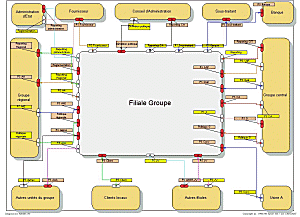 |
| The same external architecture is presented now with
more details. The service points show all exchanges that take place
between the subsidiary and other organizational entities (the corporate
headquarters, the regional division, the clients, the suppliers, other
organizations in the group, external entities like the Administration,
the Banking institutions, etc. |
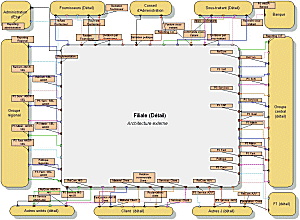 |
| The internal architecture
presents the organizational entities that structure the subsidiary, as
well as the ERP system. You can analyze the relations that are
established between these entities and the integrated system. The
internal architecture shows the services that organizations require from
the ERP system |
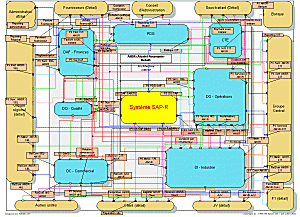 |
| An execution scenario
presents the behavior of the subsidiary to process a client request. You
can see the high number of direct interactions between the internal
organizations. |
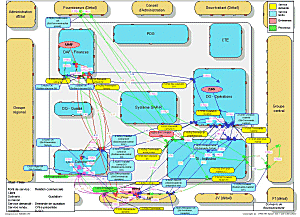 |
| The same execution scenario is presented now by
taking into account the ERP system. We can show the central role played
by this system and the obvious reduction of the direct exchanges between
internal organizations. |
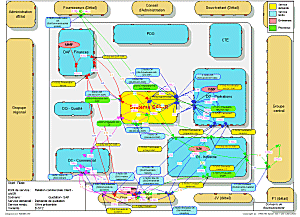 |
| A phase of the process
This picture shows an execution phase that we find useful to emphasize -
a simultaneous exchange of the integrated system with two external
organizations. |
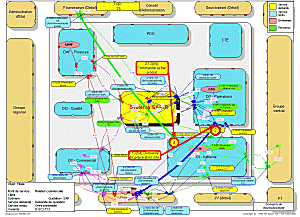 |
Conclusions
This analysis positions the ERP integrated system in the
enterprise and helps analyze its interactions with existing organizational
systems: new services offered to access the ERP system, the process changes.
Amarco prepares the introduction of the ERP system. You may notice that
these analysis is at the beginning not dependent upon the ERP system that is
chosen. The enterprise may use this vision to master and supervise the
introduction of the integrated system. Amarco helps define the requirements
and how to use the system once it is implemented.
| You find more information about this case
study in our "Documents"
section. |


|
|





